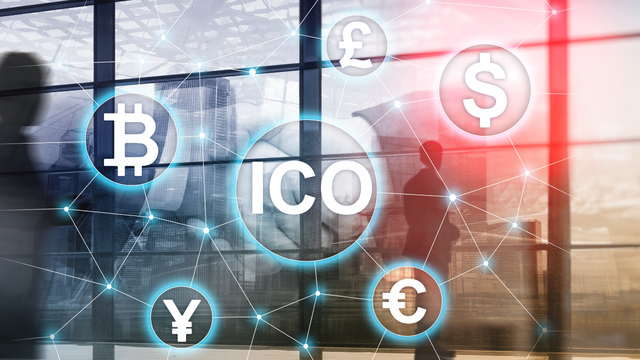What Are the Different Phases of ICO Development?
In the realm of cryptocurrency and blockchain technology, Initial Coin Offerings (ICOs) have emerged as a popular method for fundraising and launching new digital assets or projects. ICOs provide a means for entrepreneurs and developers to raise capital by selling digital tokens to investors. However, the process of conducting a successful ICO involves several distinct phases, each with its own set of challenges and considerations. In this guide, we'll delve into the different phases of ICO development, offering insights into what each stage entails and how to navigate them effectively.
Phase 1: Ideation and Conceptualization
Every successful ICO begins with a solid idea or concept. During the ideation phase, entrepreneurs and development teams brainstorm potential projects, identifying market needs, and evaluating the feasibility of their ideas. Key considerations include:
Market Research: Understanding the target audience, assessing competitors, and identifying market trends are crucial steps in shaping the concept for an ICO project.
Whitepaper Creation: The whitepaper serves as the cornerstone of an ICO project, outlining its purpose, features, technology stack, tokenomics, and roadmap. It's essential to craft a comprehensive and transparent whitepaper to attract potential investors.
Legal and Regulatory Compliance: Navigating the complex regulatory landscape is paramount to ensuring the legitimacy and long-term viability of an ICO project. Consultation with legal experts to ensure compliance with relevant laws and regulations is a critical step in this phase.
Phase 2: Pre-ICO Preparation
Once the concept is solidified and the whitepaper is drafted, the focus shifts to preparing for the pre-ICO phase. This stage involves laying the groundwork for the token sale and generating initial interest among potential investors. Key tasks include:
Token Economics Design: Determining the token distribution model, pricing strategy, and allocation of funds raised is essential for establishing the economic framework of the ICO.
Smart Contract Development: Smart contracts govern the issuance, distribution, and transfer of tokens during the ICO process. Developing secure and audited smart contracts is vital to ensuring the integrity of the token sale.
Marketing and Community Building: Building a strong community around the project is crucial for generating hype and attracting investors. Engaging in targeted marketing efforts, social media outreach, and participating in industry events can help raise awareness about the upcoming ICO.
Phase 3: ICO Launch and Token Sale
With the preparations complete, the ICO enters the launch phase, where tokens are made available for purchase by investors. This stage requires meticulous planning and execution to ensure a smooth and successful token sale. Key activities include:
Token Sale Platform Setup: Choosing a reliable platform for hosting the token sale and setting up the necessary infrastructure for accepting contributions from investors.
KYC/AML Compliance: Implementing Know Your Customer (KYC) and Anti-Money Laundering (AML) procedures to verify the identity of investors and mitigate the risk of illicit activities.
Marketing and Promotion: Launching targeted marketing campaigns to reach potential investors and drive participation in the token sale. Utilizing various channels such as social media, email newsletters, and community forums can help maximize visibility.
Phase 4: Post-ICO Activities
After the conclusion of the token sale, the focus shifts to post-ICO activities aimed at fostering community engagement, advancing the project development, and ensuring transparency. Key tasks include:
Token Distribution: Distributing tokens to investors according to the terms outlined in the ICO whitepaper and smart contracts. Timely and transparent token distribution is essential for maintaining investor trust.
Exchange Listing: Securing listings on reputable cryptocurrency exchanges to facilitate liquidity and enable trading of the project's tokens. Exchange listings can significantly impact the token's market value and visibility within the crypto community.
Project Development: Allocating resources towards project development and achieving key milestones outlined in the roadmap. Regular updates and communication with the community help maintain transparency and credibility.
Phase 5: Continuous Improvement and Growth
Beyond the initial phases of ICO development, successful projects focus on continuous improvement, innovation, and long-term growth. This involves:
Community Engagement: Fostering a vibrant and engaged community around the project through regular communication, events, and incentives. Actively soliciting feedback and addressing concerns can help strengthen the project's support base.
Partnerships and Collaborations: Forming strategic partnerships with other projects, businesses, or organizations can open up new opportunities for collaboration, expansion, and adoption.
Regulatory Compliance: Staying abreast of evolving regulatory requirements and ensuring ongoing compliance with relevant laws and regulations. Proactive engagement with regulators can help mitigate legal risks and ensure the project's sustainability.
In conclusion, the journey of ICO development comprises multiple phases, each demanding careful planning, execution, and adaptation to changing market dynamics and regulatory landscapes. By navigating these phases diligently and adhering to best practices, entrepreneurs and development teams can increase their chances of success in launching a viable and sustainable ICO project.
